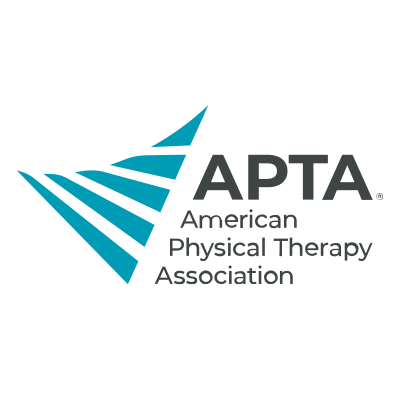Continued Education Lectures
The main intent of these videos is to act as a supplement for therapists who have taken our continuing education courses. We ask that you receive personal instruction prior to applying, using, or instructing others in the content of these videos. Please reach out if you have any questions.
Foundations
Day 1
The New Clinical Practice Model
Interplay Between Systems, Tissues, and Types of Presentations
Manual Skills – Palpation, Passive Movement Testing, and Manual Treatment
Day 2
Questions Worth Thoughtful Responses That Further the Understanding of Holistic Patient Care
Introduction to Our Mentors and Originators of Our Foundation in OMT
Review and Clarification of the Basic Premises of Our Current Clinical Model
Building on the Basics Leading to Productive Finesse of Manual Treatment Variables
Soft Tissue Characteristics and Accessory Mobility Testing
Palpation, Passive Movement Testing, Manual Treatment for Inflammatory and Non-inflammatory Edema
Palpation, Passive Movement, Manual Treatment for Increased Muscle Tone and Mechanical Hypomobility
Day 3
Intro to the Day, Overview and Interpreting Patient Profile
Intro and Patient Profile Continued, Interpreting Subjective Key Indicators
Interpreting Objective Key Indicators
Tying It Together. Clinical Intuition Leading To Efficient Interface
Interpreting Active ROM and Resistance Testing Key Indicators
Intro to Ergonomics – Car Seat Eval
Mitigating Stresses During Sitting/Deskwork
Intro To Influencing Patient’s Expectations, Perspective, Buy-in and Behavior Part 1
Intro To Influencing Patient’s Expectations, Perspective, Buy-in and Behavior Part 2
Day 4 – Exercise and Training
Initiating Exercise – Concepts for Protecting Vulnerable MSK Tissues
Calming the Nervous System, Establishing Control, Body Sense, and Physical and Mental Toughness
Upper Quadrant with Focus on the Spine
Day 1
Basic Concepts through Screening Exam
Neural Irritation – Nerve Root
Neural Irritation – Peripheral
Treatment Focus and Rx of Inflamed NR
Discussion of Pt Management, Jt mechanics, Rx Focus, U/C Basics
Valuable Verbal Exchange During Practice Session
Upper Cervical Mechanics – Sorting Out Rotation 0-C2-3
Testing O-C2-3 Flexion, Extension, Traction
Day 2
Intro to the Art of Intervention
A Few Words About Identifying Cervical Level Landmarks
A Few Words About Irritated Nerves
Axis of Motion and Plane of Resistance
Finessing C2-3 and Below Segmental Movement
Refining O-A Segmental Movement
Refining C1-2 Rotation Segmental Testing
Controlling Axis of Movement Through Feeling Leading to Artful Application of Treatment
Refining Segmental Testing C2-3 and Below
ST Treatment/Localized Joint Mobilization 0-CT Junction Spine
Finessing the Application of Manual Treatment
Hypermobility Discussion and Translation Testing Mid-C/S
Cervical Segmental Stabilization Exercises
Use of a Cervical Collar and Upper Quadrant Rhythmic Stabilization Exercises
Day 3
Transitioning from Intellectual to Sensory Driven Interface
Provocation-Alleviation Basics – Cervical Rotation
Clarifying Provocation-Alleviation Adding Cervical-Thoracic Flexion Testing
Coupled and Combined Movements
O-A Flexion Mobilization/Suboccipital Muscle Stretching
Review of Coupled and Combined Movements
Increasing Specificity by Utilizing Combined Movements From Above in the Cervical Spine
Refining Mobilization Utilizing Movements From Above
Increasing Specificity by Utilizing Combined Movements From Below in the Cervical Spine
Increasing Mobility of the Thoracic Cage Tissues in Prone
Increasing Mobility Specificity at the CT Junction/Upper Thoracic Cage Prone
Wedge Mobilization CT and Thoracic Segments
Wedge Mobilizations Upper-Mid Thoracic Segments
Day 4
Self Suboccipital Massage for Headache Management
Cup on Forehead Exercise for Headache Management
Sitting C6 + C7 Physiological Segment Testing
Sitting Thoracic Segment Testing Translation
Sitting Thoracic Segment Testing Flexion
Sitting Thoracic Segment Testing Extension
Soft Tissue Assessment and Treatment Scapulothoracic Muscles Prone
Soft Tissue Assessment and Treatment Scapulothoracic Muscles Side Lying
Soft Tissue Assessment and Treatment Scapulothoracic Muscles Supine
Soft Tissue Assessment and Treatment Scapula Thoracic Muscles Supine with Glens-Hum. Precautions
Self-Stretch Anterior Structures Scapulothoracic Muscles
Self Mobilization Thoracic Spine Regional Mobilization Using a Styrofoam Roll
Segment Specific Thoracic Mobilization
Segment Specific Self-Thoracic Mobilization Using the Mobilization Wedge
Prone Rib Specific Testing with Treatment Option
Supine Rib Specific Self Mobilization Using a Tennis Ball
Self Intercostal Muscle Stretching Using Gym Ball Upper and Lower Rib Cage
Beginning Thoracic Cage Self Mobilization Exercise with Prone and Supine Gym Ball
Soft Tissue Treatment to Intercostal Space Supine
Continued Manual Treatment For Intercostals Using Ice Massage and MFD
Dennis Morgan Hourly Thoracic Exercise/Frog on Ball Upper Spinal Strengthening
Scapular Depression Stabilization Exercise Sitting/Scap Protraction w/Push-Ups and Gym Ball
Upper Quadrant with Focus on the Extremity
Day 1
Anatomy Review – Scanning UQ Nerves
Treatment Sequence – Edema/Inflammation
Clarifying production and assessing GH Glides #1
Clarifying production and assessing GH Glides #2
Selective tensioning of Rotator Cuff muscles
Exposing and palpation of the Rotator Cuff tendons
Specific manual treatment for Rotator Cuff “Tendinitis” connective tissue issues
Home program for Rotator Cuff connective tissue issues
Finding and addressing regional connective tissue changes
Finding and addressing regional connective tissue changes and initiating treatment to restore UQ motor function
Day 2
Many topics focusing on the Clinical Content
Illusion of Anatomy. Palpation the orientation of the S-C, A-C, GH, and subcromial joints
Testing GH glides/accessory mobility
Assessing GH/shoulder physiologic movements
Targeting shoulder muscles with physiologic lengthening tests
Physiologic pump massage for the Supraspinatus
Physiologic pump massage for the Supra continued
Physiologic pump massage for the Infraspinatus
Physiologic pump massage for the Biceps
Physiologic pump massage for the Subscapularis
Preserving and restoring GH and Subacromial joint play
Advancing GH joint play treatment
Using stabilization belts to enhance GH mobilization techniques
Mobilization to restore the upper limits of GH range
Initiating neuromotor rehab in the Upper Quadrant
UQ rhythmic stabilization HEP and MRE to enhance function of the shoulder girdle muscles
Advancing trunk and shoulder girdle/UQ motor function
Day 3
Overview of treatment focus and the healing timeline
Ed Nickerson – Guiding early healing
Ed Nickerson – Progression of the rehab program
Ed Nickerson – Easing towards strengthening at 12 weeks post-op. Motor activation while healing progresses
Ed Nickerson – Finessing the application of activation exercises. Progression at 3-6 weeks post-op
In clinic treatment to compliment a great home exercise program
Adding physiologic soft tissue work in supine
Sidelying manual treatment. Posting for better sleep. Resisted exercises for shoulder girdle muscles
Progressing to prone treatment to restore combined shoulder movements
Restoring motor activation progressing to strengthening
Progression of resisted exercises #1
Progression of resisted exercises #2
Progression of resisted exercises #3
Progression of resisted exercises #4
Progression of resisted exercises #5
Progression of resisted exercises #6
Progression of resisted exercises #7
Day 4
Case Studies – Using our model. Anatomy of the elbow, forearm, wrist, & hand
Quick palpation to scan & identify type & magnitude of the presentation
Neural palpation to scan for their potential contribution to the presentation
Biasing elbow PMT to differential structures
Sorting out pronation and supination restrictions
Sorting pronation and supination restrictions – continued
Testing carpal mobility/stability
Adjusting intervention to match the presentation
Restoring elbow and forearm joint mobility
Lower Quadrant with Focus on the Spine
Day 1 – The Foundation of Lumbar Management and Exercise Concepts
Intro, Perspective, and Intervention Overview
Controlling the Distribution of Mechanical Forces as the Foundation of Intervention
Clinical Models – Functional Loss Characteristics
Clinical Models – Checkbook Theory and Functional Desire vs Functional Capacity
Side-lying Screening – Soft Tissues, SIJ, L/S
Side-lying Segmental Mobility Assessment Continued
Discussion Regarding Interpretation of Movement Findings
Additional Initial Screening Options for Lumbar Patients
– Assessing Anterior Hip/Thigh Structures
Progression towards Hook lying LQ Rhythmic Stabilization Exercises
Connective Tissue Component HEP
Day 2
Managing a L/S shift (continued). Home program for shift correction.
Symptom Localization Procedures cont. – Multiple joint structures – Weight bearing
Symptom Localization Clarifications
Symptom Localization – Flexion
Symptom Localization – Prone rotation
Symptom Localization – Side-lying flexion-extension and rotation
Bringing symptom localization together/Where it fits into the overall scheme
Palpation and passive movement testing
Specific translation mobilization lower thoracic through lumbar motor segments
Self-specific translation mobilization lower thoracic through lumbar segments
Mobilizing lower thoracic and upper lumbar segments/tissues in side-lying
Progression of the training routine for L/S – lower quadrant patients: Supine on the Balance Board
Progression of the training routine for L/S – lower quadrant patients: Prone on the Balance Board
Day 3
Review of Overall Concepts when Treating Lumbar Pathology
Assessing Bowstring, neuromotor function and pelvic girdle tests supine
Segmental testing SIJ and L/S in sidelying
Assessing lower thoracic and upper lumbar tissues and mobility in sidelying
Assessing SIJ/pelvic joints in prone
Mobilization lower thoracic and upper lumbar tissues in sidelying
Mobilization of lower lumbar segments in sidelying
Prioritizing self-care/HEP options
Day 4 – Ergonomics, Exercise and ADL Management
Utilizing Ergonomics to Enhance Tolerance During Prolonged Activities – Desk Set-up/Office Work
Utilizing Ergonomics to Enhance Tolerance During Prolonged Activities – Lying Support/Bed Set-ups
Utilizing Ergonomics to Enhance Tolerance During Prolonged Activities – Car Seat Adjustments
Progressing Training Concepts and Practice While Protecting Musculoskeletal and Neural Tissues
Progression to Prone on the Balance Board
Getting Patients with Musculoskeletal Pathology Safely to the Floor
Utilizing the Exercise Variables on the Gym Ball
Initiating a Manual Resisted Exercise Routine in Stable Positions
Manual Resisted Exercise on the Balance Board and Air Cushions
Use and Modification of Gym Equpiment
Lifting Free Weight Against Gravity in Preparation for a Return to Function
Restoring Lower Extremity Mobility with Static Stretching
Establishing a Group Exercise Program
Lower Quadrant with Focus on the Extremity
Day 1
Connective Tissue Basics and Influence on Finesse of Intervention
Bringing the Initial Thoughts Together into Systems Thinking and Intro to the Observation Scheme
Observation and Initial Screening in Standing
Supine Screening Exam – Palpation, Passive ROM, Tension Signs, Resisted Tests
Supine Evaluation including Screening the Spine
Addressing Superficial Tissues with Cupping/Myofascial Decompression
Cupping Techniques Around the Hip
Iliopsoas Involvement and Interventions
Addressing Anterior Hip Impingement
Home Program for Anterior Hip Impingement
Hip Traction Near Extension to Address Hip Pain with Weight Bearing
Day 2
Thomas Test Screening & Screening supine resisted tests
Managing edema in post-TKA patient
Control the Distribution of Mechanical Forces While Addressing the material properties of tissues
Stretching the Posterior Hip Capsule/Structures
Stretching the Anterior-Medial Hip Capsule/Structures
Initiating a Neuromotor Component into Intervention
Treating Local Structures Contributing to Patellofemoral Pain
Cupping to Address Soft Tissue Changes Around the Knee
Day 3
Clarifications from the last class, intro to Ed Nickerson and the management of post-op knees
Ed Nickerson – Post-op knee rehab. Observation, testing flexion-extension and eliciting compliance
Roll play of common patient interface one week post-op
Review and building on the initial post-op interface – Getting the pt “on side”
Active session for regaining extension in difficult situations
Quad activation HEP. Sidelying adduction leg lifts. Pattelar tendonitis intervention
Reviewing priorities. Restoring flexion. Getting patient on the bike.
Bringing post-op knee management principles together. Post-surgical timeline expectation
Incorporating joint accessory mobilization into intervention directed at restoring knee extension
Incorporting joint accessory mobilization into intervention directed at restoring knee flexion
Joing play mobilizations to restore ankle plantar and dorsi flexion
Addressing hamstring injuries/pathologies
Progressing resisted lower quadrant exercises biased towards hamstring rehab
Progression of resisted exercies for hamstring rehab
Progression of lower quadrant exercises to weight bearing
Progression of weight bearing exercies in lower quadrant rehab
Day 4
Pelvic Floor Presentation by Rachel Worman, PT, DPT
Foot & Ankle Presentation by Jon Sherwood, MSPT, OCS, ATC, MA, CSCS, MFD CERT, ASTYM CERT
Wellness Talks at FPT
Request an Appointment
Please indicate your preferred therapist, if any, and someone from our appointment desk will get back to you. If you would like to call to book your appointment, our number is (916) 355-8500.






